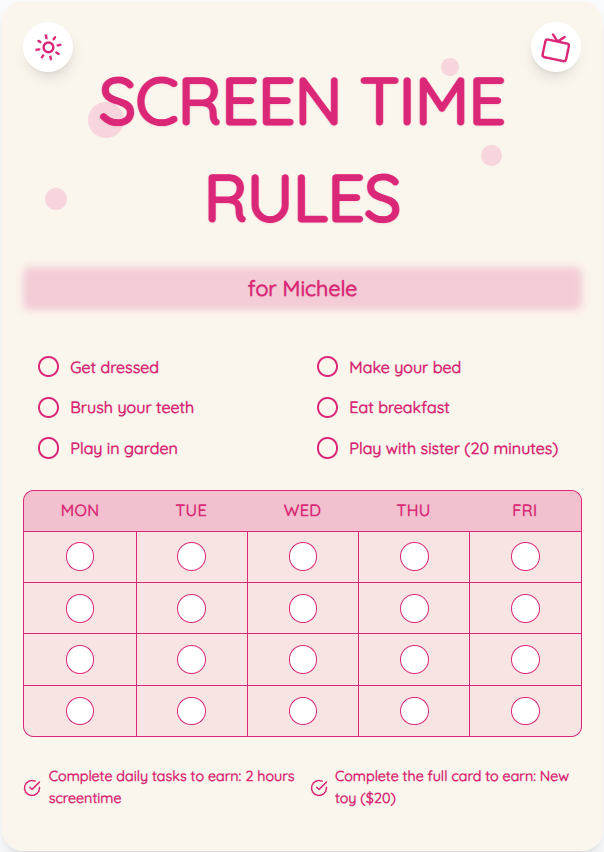The Ultimate Guide to Setting Screen Time Limits with Microsoft Family Safety
As a parent, managing your child's screen time can be challenging. With the help of Microsoft Family Safety, you can implement effective strategies to set limits and create a healthy balance. This guide provides actionable advice and practical tips to help you navigate screen time management with ease.
See What Your Screen Time Chart Will Look Like
Here's an example of a beautiful, customizable screen time rules chart you can create for your family

The Importance of Setting Screen Time Limits
Setting screen time limits is crucial for your child's overall well-being and development. Excessive screen time can have negative effects on their physical health, mental health, and social skills. By establishing boundaries early on, you can promote healthy habits and ensure a balanced lifestyle for your child.
How to Use Microsoft Family Safety for Screen Time Management
Microsoft Family Safety offers a range of features to help you monitor and control your child's screen time. From setting daily limits to blocking inappropriate content, this tool empowers parents to create a safe digital environment for their children. Learn how to leverage Microsoft Family Safety effectively to establish healthy screen time habits.
Put These Tips Into Action
Create a custom chart to implement these strategies with your child
Practical Tips for Implementing Screen Time Limits
1. Create a screen time schedule that includes designated breaks and offline activities. 2. Encourage outdoor play and physical exercise as alternatives to screen time. 3. Use positive reinforcement and rewards to motivate your child to adhere to screen time limits. 4. Set a good example by practicing healthy screen time habits yourself.
Practical Tips for Success
- Create a screen time schedule with breaks and offline activities
- Encourage outdoor play and physical exercise as alternatives
- Use positive reinforcement and rewards for compliance
- Lead by example with your own screen time habits
Frequently Asked Questions
How can I track my child's screen time using Microsoft Family Safety?
Microsoft Family Safety allows you to view detailed reports of your child's screen time activities, including which apps and websites they have accessed. You can use this information to monitor their usage patterns and make informed decisions about setting limits.
What are the recommended daily screen time limits for children?
The American Academy of Pediatrics recommends limiting screen time to 1-2 hours per day for children aged 2-5, and consistent limits for older children. However, it's essential to tailor these guidelines based on your child's individual needs and activities.
How do I address resistance from my child when enforcing screen time limits?
When faced with resistance, try explaining the reasons behind the screen time limits in a calm and empathetic manner. Encourage open communication and involve your child in setting reasonable boundaries. Consistency and positive reinforcement can help reinforce the importance of adhering to the limits.
By leveraging the features of Microsoft Family Safety and implementing the practical tips provided in this guide, you can successfully manage your child's screen time and promote a healthy digital lifestyle. Remember, setting limits is about creating a balance that supports your child's well-being and development. Take the first step towards healthier screen time habits today!
Ready to Transform Your Family's Screen Time?
Join thousands of parents who have successfully managed screen time with our customizable charts.
